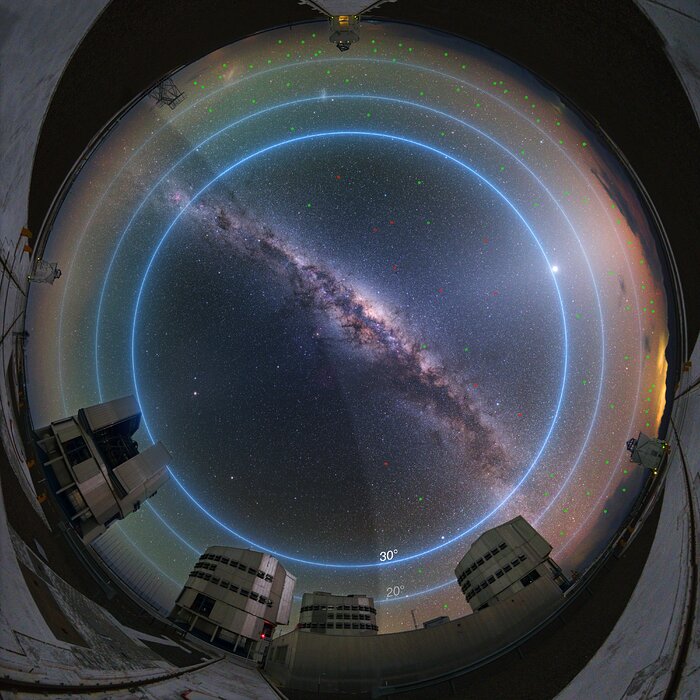Areas of the sky most affected by satellite constellations
This annotated image shows the night sky at ESO's Paranal Observatory around twilight, about 90 minutes before sunrise. The blue lines mark degrees of elevation above the horizon.
A new ESO study looking into the impact of satellite constellations on astronomical observations shows that up to about 100 satellites could be bright enough to be visible with the naked eye during twilight hours (magnitude 5–6 or brighter). The vast majority of these, their locations marked with small green circles in the image, would be low in the sky, below about 30 degrees elevation, and/or would be rather faint. Only a few satellites, their locations marked in red, would be above 30 degrees of the horizon — the part of the sky where most astronomical observations take place — and be relatively bright (magnitude of about 3–4). For comparison, Polaris, the North Star, has a magnitude of 2, which is 2.5 times brighter than an object of magnitude 3.
The number of visible satellites plummets towards the middle of the night when more satellites fall into the shadow of the Earth, represented by the dark area on the left of the image. Satellites within the Earth's shadow are invisible.
Oikeudet:ESO/Y. Beletsky/L. Calçada
Kuvasta
| Tunnistus: | eso2004a |
| Tyyppi: | Simulaatio |
| Julkaisupäivä: | 5. maaliskuuta 2020 9:00 |
| Vastaavat julkaisut: | eso2004 |
| Koko: | 9000 x 9000 px |
Kohteesta
| Nimi: | Very Large Telescope |
| Tyyppi: | Unspecified : Technology : Observatory |
| Kategoria: | Fulldome Paranal |
